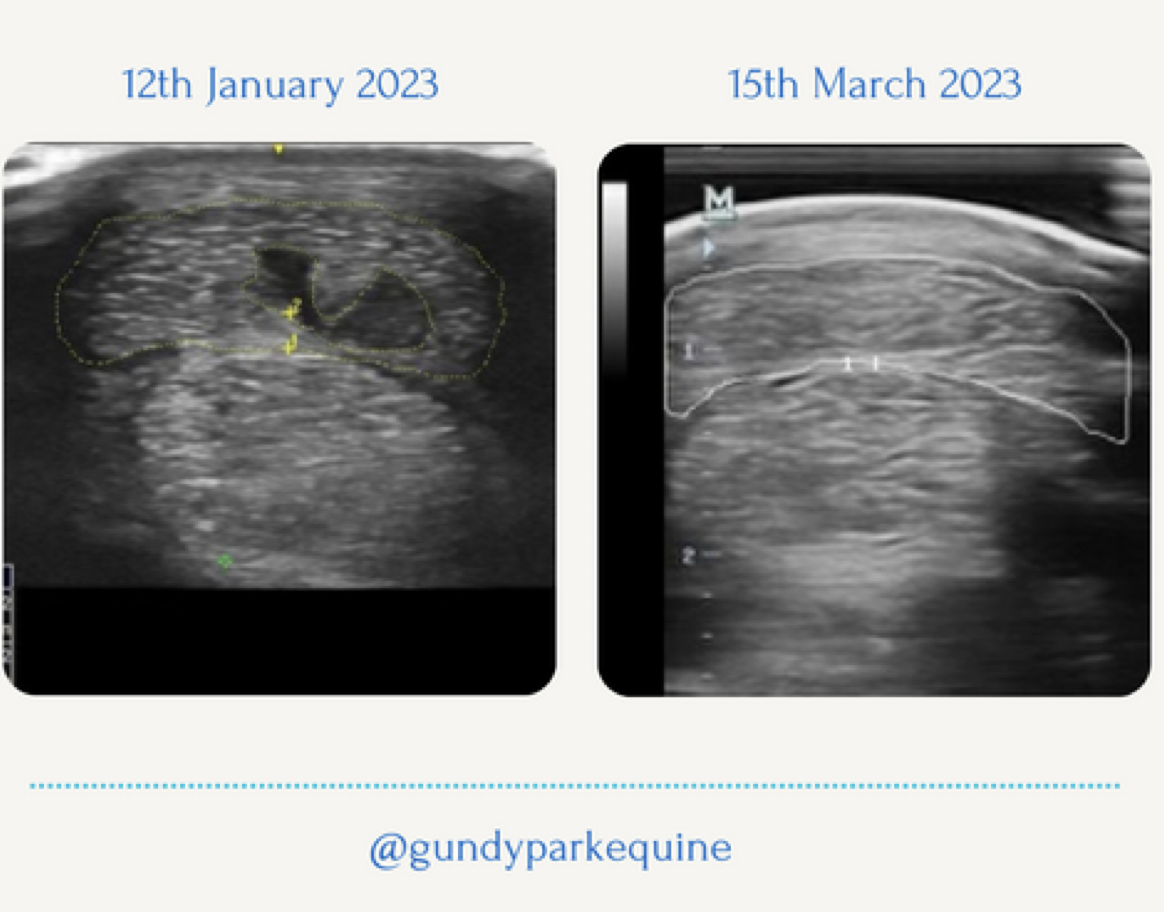Cryotherapy for Treating an SDFT Injuries in Horses
Tendon injuries can be a common occurrence in training horses. In this blog, we look at a case study that successfully used cryotherapy to treat SDFT Injuries in Horses.
What is an SDFT Injuries in Horses?
The superficial digital flexor tendon is located in a horse’s fore and hind limbs. Its role is to support and stabilise the fetlock joint. The SDFT supports a lot of weight and receives a significant amount of stress during activities such as jumping making it highly susceptible to injuries.
Overtraining is a common cause of SDFT injuries. The repeated strain on the tendon leads to the progressive weakening of the tendon. Individual fibres tear causing tendonitis and in more serious cases, the rupturing of the tendon. Sudden falls or a strike from another limb is also a common cause of SDFT injuries.
The clinical symptoms of SDFT injury can vary. Signs may include lameness, swelling behind the cannon bone, pain upon touch, and inflammation and heat in the SDFT area.
Treatment of Equine SDFT Injuries
Treating an SDFT injury often involves using cold therapy, anti-inflammatory drugs, and hand walking along with rest. As the injury improves, exercise can be increased gradually to strengthen and rehabilitate the tendon.
Case Study – Using INSTANTCRYO™ Cryotherapy for Treating SDFT Injuries in Horses
A Standardbred stallion entered an 8-week intensive rehabilitation program at the Gundy Park Equine Rehabilitation & Fitness Centre in Australia to be treated for an SDFT injury.
Following the initial injury, the core lesion was injected with Platelet Rich Plasma (PRP). The 8-week treatment plan then began which involved multiple daily treatments of INSTANTCRYO™ cryotherapy along with hydrotherapy sessions and daily hand walking.
The scans below show the SDFT injury at the start of the 8 weeks (January 12th 2023) and at the end of the 8 weeks (March 15th 2023). The scans show significant improvements in the SDFT area within such a short time frame. Visible improvements in the horse’s mobility were also seen. As a result, the stallion will be ready to return to racing within the next few months.
The results from this case study demonstrate that regular cryotherapy treatments using INSTANTCRYO™, hydrotherapy sessions and daily hand walking can be an effective treatment plan for SDFT injury recovery.
In addition to using INSTANTCRYO™ as a tool for SDFT injury recovery, regular treatments can be applied to the area on healthy horses as a preventative measure. The physiological effects of cryotherapy will help strengthen the tendon and prevent it from weakening.

Visit @instantcryo_ecb to see how else our customers are using INSTANTCRYO™ to improve the health and well-being of horses.
Find out more about INSTANTCRYO™ for equine here. If you’re interested in buying or would like more information, please contact us here.